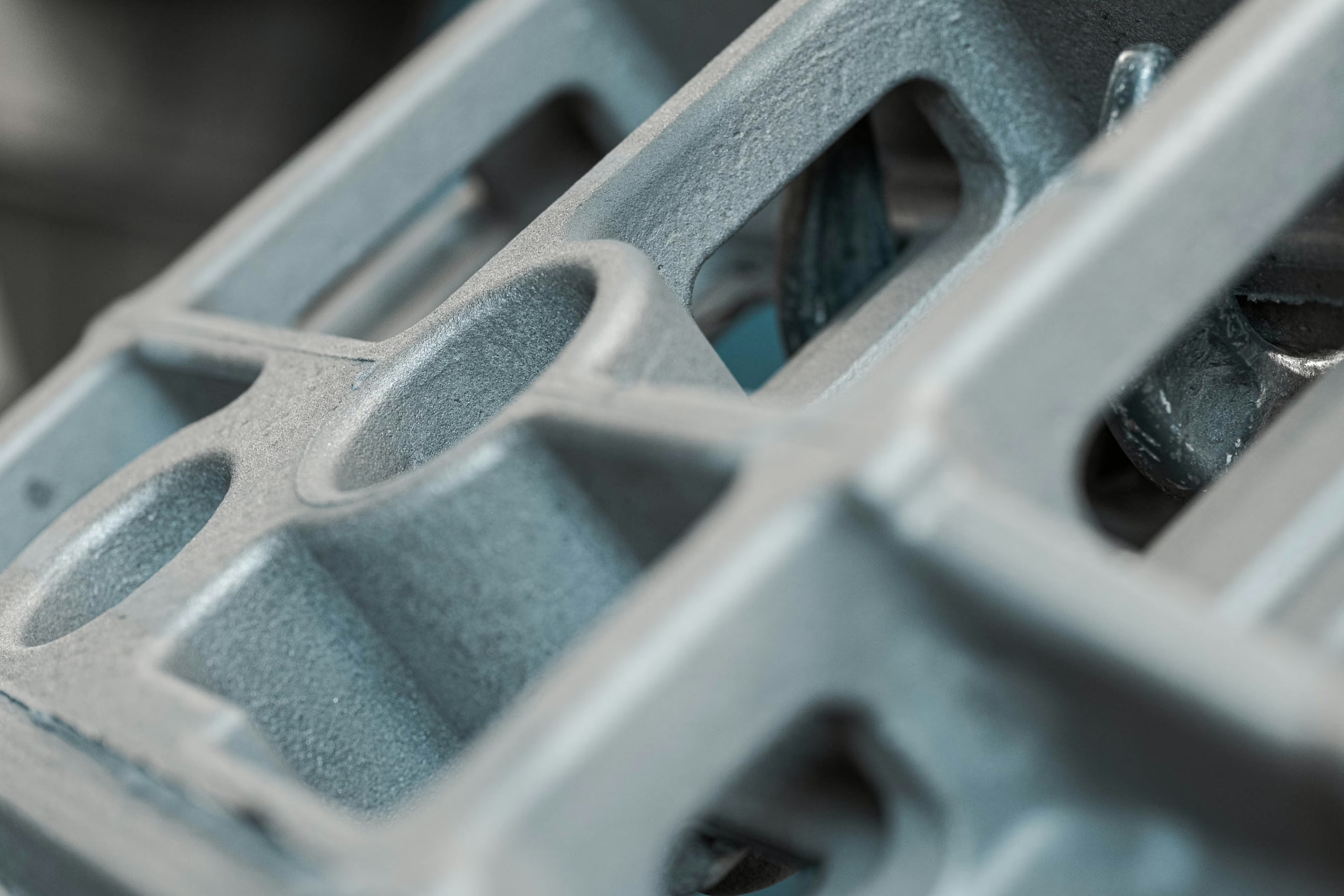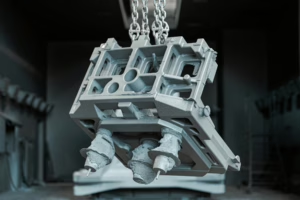
New developments in the production and procurement of castings are making castings an attractive material and process for more applications. Super! Making these new developments quickly accessible to everyone is what CASTFAST stands for. More choice, more possibilities, new technologies – this can sometimes make it more difficult to quickly find the optimum solution for a project.
When economic, technical, practical and scheduling reasons play a role in the decision, how do you weigh them up? The answer: techno-economic analysis. The CASTFAST team has refined this for all eventualities in casting production and put it at the service of our customers. Whether it’s an intensive project or just a quick one to get things moving. Here is a brief introduction.
There is a lot going on in the foundry. New processes, suppliers and materials are constantly providing designers and users with new possibilities. A lot has happened in recent years in particular. The possibilities of 3D printing have been harnessed for castingdigitalization and networking are winding their way through foundries and supply chains. So much more is possible, so much more is accessible, so much more is economical!
With the help of a techno-economic analysis that systematically records all relevant options and levers and with which the best possible solution for a project can be found based on preferences, objectives and boundary conditions. In its simplest form, this is a decision tree that systematically runs through feasibility, cost-effectiveness and technical advantages and disadvantages.
The holy grail: a data-supported computer model that is constantly updated with the latest technology (and economics) and shows the best way forward in the shortest possible time. The more complete the model, the more precisely the economic advantage can be quantified. The faster, the lower the decision-making costs.
At CASTFAST, we are constantly working on this model. Our database is now broad (i.e. it includes many different suppliers and processes) and deep (i.e. it includes in-depth technical expertise). We use our (casting) techno-economic analysis and advice on a daily basis to show customers new or simply optimal ways of working with castings (do you have a direct need? Then simply here here).
What questions does the analysis ask? Here we briefly outline how the many factors are systematically weighed up and which adjustments the customer can make.

The first step is to look at the part and ask: is casting even possible? In principle, the answer is almost always yes.
The only technical limits are the size of the pit into which you can cast (hull no, ship’s engine yes) and the wall thickness. The material must be able to flow in order to fill the mold. If the wall thickness is too thin, the molten material solidifies too early and blocks the mold. Thanks to die casting and investment casting, however, the limit of what is possible here is now less than 1 mm wall thickness.
If casting works, then the question arises as to whether it is likely to be advantageous over the alternatives. The advantages of casting lie in the possibilities of functional integration and the use of cast iron as a material. Instead of joining different functional components together, they can be manufactured directly “from a single casting”. The material cast iron (with its specific properties – such as vibration damping) can only be produced by casting. You can cast a block and mill it down, but you can’t simply print the structure that makes up the lamellar graphite in a metal 3D printer.
Regardless of whether a part was originally designed as a welded, milled or direct printed part, we run it through the same tests as we would for a part that has already been decided to be produced as a casting. We look at: Dimensions, weight, wall thicknesses, complexity, material and a whole range of other geometric parameters and ratios.
Cast iron can be a good alternative, especially for high results for the “complexity test” (the functional integration mentioned above is possible because cast iron loves complexity).
What does complexity mean for us? Broken down, it is how angled and “hollow” a component is. A housing is more complex than a panel. It is more difficult to produce a lot of surface area on a small actual volume with the same dimensions. With welding, this is still possible with (proverbial) bending, but with milling it quickly becomes very complicated (for example with regard to the tools required). Although milling is often the fastest method (for small quantities), it has its limits – for example, if the chip volume is very high compared to the component volume, i.e. a disproportionately high percentage is milled away. Casting is much freer in terms of shaping. With the newer casting processes, such as newer variants of full mold casting and 3D sand printing, new degrees of freedom have been added that have further expanded the range of what can be cast.
For all the factors mentioned, we are building coefficients and formulas along the way that will soon automate sections of the analysis so that our highly sought-after casting experts can focus on the real sticking points and we can run through more options more quickly. In addition to the technical feasibility aspects, economic and practical aspects come into play in the next step.
If casting works and offers advantages, which process is best for the given project? The answer depends not only on profitability calculations, but also on customer preferences and boundary conditions such as scope for material and component design, deadline pressure and sustainability considerations. All of this can be included in the analysis. But first back to technical considerations.
Most of our inquiries are currently processed in sand casting. Why sand casting? Because it offers the widest range in terms of sizes and speeds.
Within sand printing, there is a selection of processes that can produce filigree components (3D sand printing) or larger components (special process with foam model) very quickly.
What are the differences between 3D sand printing and foam models? Quite clearly: complexity and wall thickness. The higher the complexity and the lower the wall thickness, the more you are in the 3D sand printing sector, which is generally more expensive than the foam process. Foam models are perfect for lower complexities – keyword plate. However, foam models can also be used to produce large, complex components over 1,500 mm x 800 mm x 800 mm.
Roughly speaking, the jump between foam and sand pressure mold in our iron is 25 mm wall thickness. There are of course even more subtleties that result from the geometry analysis in combination with other factors.In extreme cases, when precision and higher quantities are required, you can switch to processes with a permanent model. However, this requires the construction of a wooden model, which alone takes as long as the entire 3D sand printing process chain.
Depending on the life stage of the part, the advantages of a particular process can be exploited even further:
These are all questions that we routinely ask customers in order to eliminate “preconceptions” from the decision-making process.
What other factors can play a role? Timing can sometimes involve extreme fine-tuning – both during planning/design and “out of the box” during machining. A part can warp in all directions during solidification – within the tolerance DCTG of course – and this must be compensated for during planning.
However, compensation means more material in most cases, which means time for processing and weight for later use. Is that what you want? For prototypes, the answer is often: no, you want to save time. Later in series production: no, I want to save the costs of machining.
A more precise process reduces both, but usually costs more. Thanks to (casting) techno-economic analysis, the margin between cost savings through precision and the surcharge for precision can be optimized – or technical adjustments can be made that focus on a more cost-effective process and precision where it is needed.
Techno-economic analysis enables casting fine-tuning at its best. Decision-making will become ever faster and ever better.
Data from successful projects enriches the whole with valuable practical know-how. Tipping points and thresholds are constantly changing. What didn’t pay off yesterday may open up new opportunities tomorrow. That’s why we are constantly enriching our models to evaluate the best path in each case – while constantly integrating new technologies. And then? Then we automate in order to turn more screws at the same time and get the right answer faster and more cost-effectively.
© 2025 All Rights Reserved.